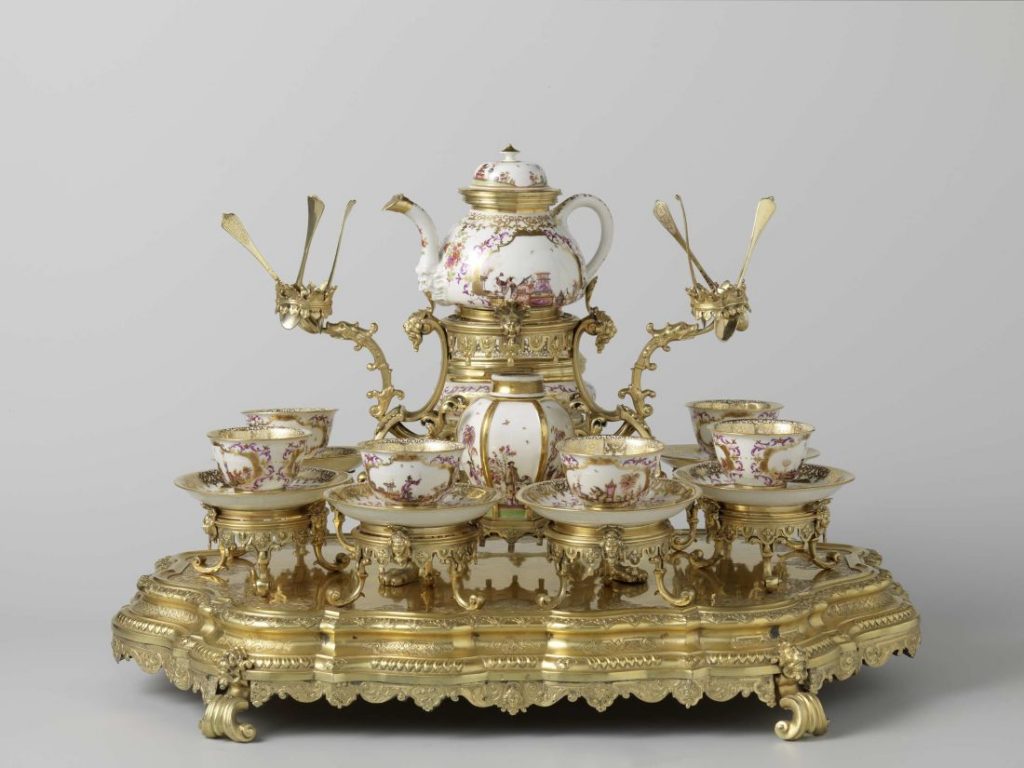Since the Antiquity, Europeans showed great interest in any goods that came from the Far East. Such interest became a real passion in the 17th to the 18th century, giving birth to an aesthetic style dubbed Chinoiserie. Because of the long journey that goods like silk, porcelain and lacquerwork took to Europe, they were generally very rare and expensive. Owning a blue and white Chinese vase was a sign of prestige and wealth. Only rich bourgeois and nobility could buy them. European goldsmiths adorned Chinese porcelain with elaborate gold pieces and Dutch painters loved to represent Chinese vases in their nature-morte paintings.
European artists and craftsmen were enchanted by patterns of Chinese landscapes, birds, flowers and people, so that castles and palaces had their own “Chinese room” with wallpaper depicting landscapes of China to adequately frame lavish collections of porcelain and lacquer furniture
Discover the Chinoiserie style as an great example of how art and techniques from different cultures can merge and mix, and enjoy a nice selection of images from Europeana in the blog authored by Julien Ménabréaz in Europeana website >>
image: Tea service and stand, c. 1725-1732, PD Rijksmuseum via Europeana
PAGODE – Europeana China is co-financed by the Connecting Europe Facility Programme of the European Union, under GA n. INEA/CEF/ICT/A2019/1931839

